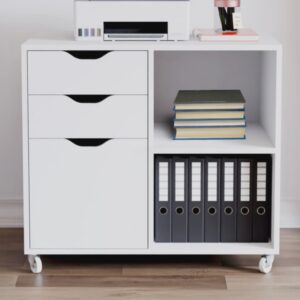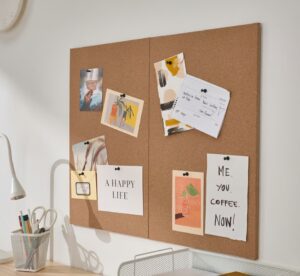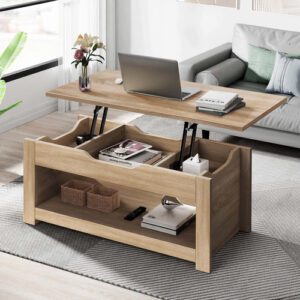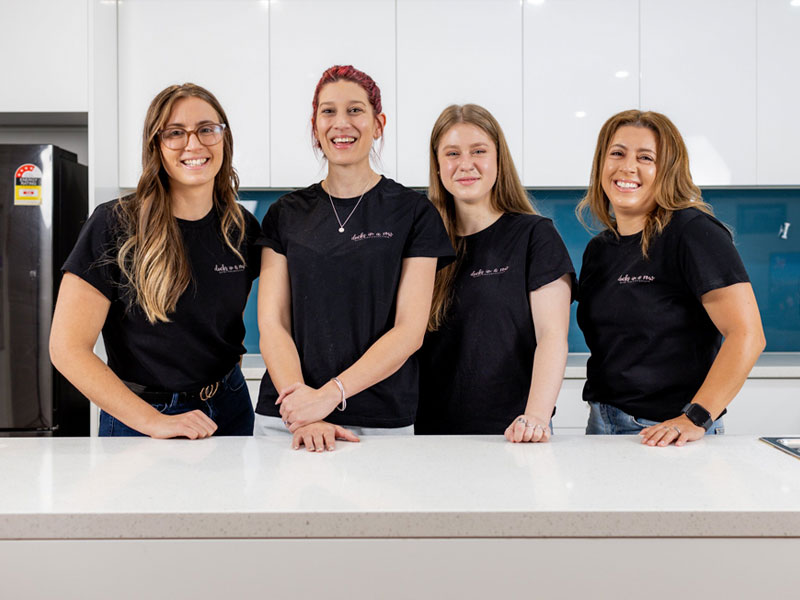Working from home offers flexibility and comfort, but it also comes with challenges, especially when it comes to staying organised. A cluttered home office can negatively impact your focus, motivation, and overall productivity. Fortunately, with the right strategies, you can transform your workspace into a streamlined, inspiring environment that supports your professional goals.
In this comprehensive guide, we’ll explore actionable steps to declutter and organise your home office for peak productivity. Whether you’re a remote worker, freelancer, student, or running a business from home, these tips will help you regain control of your space and your time.

Why Home Office Organisation Matters

A tidy, well-organised workspace is more than just visually pleasing, it’s essential for mental clarity and effective workflow. This isn’t just about good aesthetics, it’s about creating a focused zone that powers your productivity. When your space is clear and intentional, your mind can follow suit. Here’s why:
- Reduces stress and distractions: Clutter can make it harder to concentrate and increases cognitive overload.
- Boosts productivity: A clean space allows you to find what you need quickly and stay focused.
- Enhances professionalism: Even at home, a neat office sets the tone for video calls and business interactions.
- Improves time management: Systems and order reduce time wasted on searching for documents or supplies.
Step-by-Step Guide to Decluttering Your Home Office
Step 1: Clear the Entire Space
Start by removing everything from your office area. This includes clearing off your desk, emptying drawers, and removing items from shelves. Starting from scratch allows you to assess every item objectively without being influenced by where it currently sits. Once your area is clear, you’ll instantly notice what truly belongs, and what can be cleared away.
Tip: Lay out your items in broad categories like tech, stationery, paperwork, books, and decor. Seeing everything at once helps avoid duplication and reveals hotspots for clutter.
Step 2: Sort and Purge
Create four distinct piles: Keep, Donate, Relocate, and Toss. Be firm in your decisions.
- Keep: Only items that serve a clear purpose or bring joy should stay.
- Donate: Unused or gently worn items that someone else could benefit from.
- Relocate: Items that don’t belong in your office but are useful elsewhere in the home.
- Toss: Broken, outdated, or irrelevant items.
Tip: If you haven’t used something in six months and it has no upcoming purpose, it likely doesn’t belong in your office. Be ruthless in your decision-making, freedom lies in letting go.
Step 3: Tame the Paperwork

Image source: Temple & Webster
Also, Check out this Acrylic Document Organiser from Little Label Co
Paper clutter accumulates quickly. Implement a three-part system:
- Active Tray: For current projects or incoming documents.
- Filing System: Labelled folders for important, long-term documents.
- Shredding/Disposal Zone: To securely dispose of what you no longer need.
Tip: Digitise documents when possible. Use apps like CamScanner or Google Drive to store paperwork in the cloud. This structure keeps papers manageable and frees up mental space.
Step 4: Organise by Function
Group items based on how and when you use them. Designing zones that intuitively match how you move throughout the day reduces time wasted and increases workflow. Create specific zones:
- Primary Work Zone: Desk and immediate surroundings. Keep daily-use items here.
- Secondary Storage: Drawers or shelves for weekly use items.
- Reference Area: A shelf or bin for manuals, reports, or books you consult occasionally.
Tip: The fewer movements it takes to grab an item, the more efficient your setup becomes.
Step 5: Maximise Vertical and Hidden Storage

Use wall-mounted options such as pegboards, floating shelves, or magnetic strips. Install hooks under desks or use file boxes to free up space. Vertical storage not only frees up desk space but also brings visual clarity to your walls.
Tip: Cable organisers and under-desk trays help control cords and keep the area neat.
Step 6: Improve Ergonomics

Image source: Desky
Make sure your setup supports both productivity and comfort. Your body is your productivity engine, support it with thoughtful ergonomics.
- Adjust your chair for proper back support.
- Monitor should be at eye level to reduce neck strain.
- Add a desk lamp or position your desk near a window for natural light.
Tip: Small touches like a footrest or wrist support can make a big difference in comfort.
Step 7: Personalise Without Cluttering

Decorate with intention. Add a few personal items like photos, a plant, or inspiring artwork, but don’t overdo it. Infuse personality with intention, choose items that inspire without overwhelming focus.
Tip: Use decor that uplifts your mood but doesn’t distract you from work.
Room-by-Room Tips for Multi-Use Spaces
Many Australian homes don’t have the luxury of a dedicated home office. If your workspace is part of a bedroom, living room, or dining area, the key is to create mental and physical separation between work and life.
Bedroom + Office

A workspace in your bedroom can interfere with rest if not managed well.
- Use a folding screen, curtain, or tall bookshelf to visually separate the work zone from your bed.
- Keep your desk minimalist: Store all work materials in drawers or storage boxes at the end of the day.
- Consider a floating desk or wall-mounted fold-out desk to save space when not in use.
A sleek foldable desk or tidy Scandinavian trolley doubles as style and space-saving, quick to tuck away at day’s end.
Tip: Blue light from screens can disrupt sleep. Shut down devices at least 30 minutes before bedtime and keep electronics out of reach once work is over.
Living Room + Office

This high-traffic area requires smart storage and discretion.
- Use a console table or compact desk behind the sofa as your work surface.
- Store work materials in stylish baskets or storage ottomans to keep things tidy and kid-proof.
- Mount a pinboard or whiteboard inside a cabinet door to keep planning tools out of sight.
A chic console or multipurpose ottoman masks work gear in plain sight. Declutter with stylish discretion.
Tip: Use wireless peripherals to reduce visible clutter and allow for a quick pack-down at the end of the workday.
Dining Room + Office

Great natural light, but tricky for dual purposes.
- Invest in a mobile filing cabinet on wheels that can be tucked away under a buffet or sideboard.
- Use placemats or a desk mat to protect your dining table and define your work zone.
- Store office supplies in labelled containers or rolling carts that can be moved easily.
A portable filing trolley on wheels or attractive rolling cart stores supplies neatly when not in use.
Tip: Schedule “office hours” to avoid work spilling into mealtimes, mentally and physically.
Must-Have Budget-Friendly Organisation Tools
You don’t need to break the bank to get your home office in shape. With a few savvy purchases, you can achieve a highly functional space.
- Drawer Dividers: Perfect for separating pens, cords, sticky notes, and paperclips.

Image source: IKEA
Check out MALAREN Box, set of 7
Tip: Use adjustable dividers to customise your drawers. Cutlery trays also work well for office supplies.
- Label Maker: Essential for identifying what’s in each folder, box, or drawer.

Brother P-touch PT-H110 Portable Label Maker
Tip: Labelling not only helps you stay organised but makes it easier to keep everyone in the home on the same page.
- Cord Organisers: Keep your power cords, chargers, and cables untangled and out of sight.

Image source: Kmart
Tip: Velcro straps or cable sleeves from Officeworks are affordable and effective.
- Wall-Mounted Whiteboards or Pinboards: Keep track of to-do lists, deadlines, and important notes without taking up desk space.

Tip: Combine cork and whiteboard panels for a multifunctional wall station. Mount them with adhesive strips to avoid damaging walls in rental homes.
- Storage Boxes with Lids: Ideal for paperwork, stationery, or craft supplies. Stackable options save space.

Image source: Officeworks
Check out Otto A4 Storage Box from Officeworks
Tip: Choose clear boxes for visibility or opt for stylish fabric bins in neutral tones to blend with your décor.
- Bonus: Dual-Purpose Furniture: Look for desks with built-in drawers or lift-top coffee tables that can be used for work.

Image source: Temple & Webster
Tip: Browse Kmart, Bunnings, or IKEA for budget-friendly options that maximise space without compromising style.
Working in Shared or Multi-Functional Spaces
Visual Breaks = Mental Relief
Adopting a folding screen, curtains, or tall shelf can create a visual boundary between work and rest spaces, even in tight layouts.
Simple Storage, Big Impact
Choose furniture that discreetly stores your tools, carts, baskets, or ottomans allow for quick work-at-end routines.
Productivity Starts with Organisation

A well-organised home office sets the foundation for a more productive, less stressful workday. By decluttering your space, you’re also clearing mental space, making it easier to focus, create, and succeed.
Your space is your ally, create it wisely, and watch how effortlessly your focus returns.
Ready to reclaim your workspace and boost your efficiency? Start today, or get help from the pros.
Book your free consultation with Ducks in a Row Home Organisation and get one step closer to a clutter-free, high-functioning home office.


